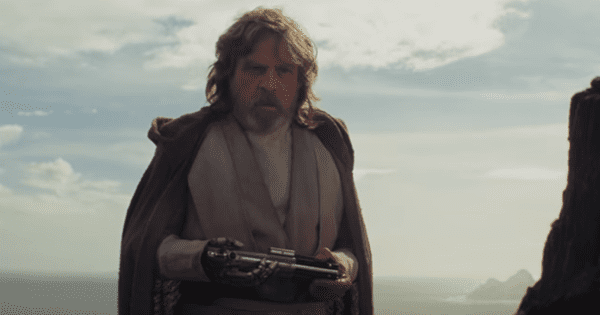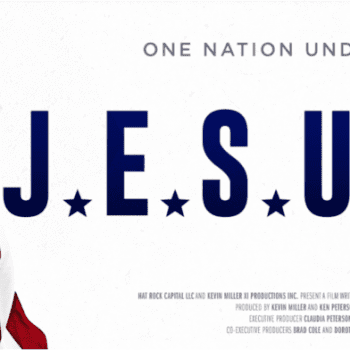I’ve watched The Last Jedi twice. I hated it the first time. I left the theater depressed and thinking this was the end of my love for Star Wars. I hated what they did with the force.
*SPOILER ALERT*
I hated how Leia did that thing in deep space. Luke’s move at the end felt fake to me, especially since we were told he no longer was connected to the force. How does someone not connected to the force pull off the greatest force move in any Star Wars movie? I don’t get it.
But good friends* and family members convinced me to give it another try. So last night I went with my brothers. And this time I let go of my expectations. I still have issues with the movie, but I was willing to take Kylo Ren’s advice and let my past experience with the force die. And as I took Kylo’s advice, I began to love this movie and the message it provides.
What I Loved about The Last Jedi: The Futility of Violence
René Girard warns in his book Battling to the End that, “we can see the growing futility of violence which is now unable to fabricate the slightest myth to justify and hide itself” (20). The point about the futility of violence was so important for Girard that he italicized it. The Last Jedi is a modern story that makes a similar point, not perfectly, but possibly better than any other Star Wars movie.
The survival of our world, indeed, the survival of the galaxy, depends on seeing through the myths that conceal the truth about violence. The Star Wars saga reveals the truth about violence while also portraying the misguided faith that most of us, whether “good” or “bad,” place in it.
A superficial understanding of The Last Jedi would simply see it as another movie with a Manichaean divide of good guys and bad guys. The good guys use violence for good, and the bad guys use violence for evil. But that misunderstands the nature of violence in Star Wars. That saga is a drama that reveals the truth behind Aleksandr Solzhenitsyn’s statement that, “the line dividing good and evil cuts through the heart of every human being.”
Poe Dameron, Violence, and Toxic Masculinity
Let’s start with Poe Dameron. Poe, the great pilot of the resistance, thinks the best way to save the rebellion is to bomb the enemy. He might ask for permission to “blow something up,” but he doesn’t need permission. In fact, if he doesn’t get permission he disobeys commands.
Poe is an example of toxic masculinity. Like Han Solo, he tries to be his own man by asserting himself into violent situations, but his use of violence makes the situation worse. Poe’s violence is futile. At one point, Leia tells Poe to “Get your head out of your cockpit.” He is willing to take orders from Leia, but when she is unconscious and another woman, Admiral Holdo, takes the lead, Poe refused to follow her commands. In fact, he starts a coup. After taking Admiral Holdo hostage, he begins plans to “blow something up,” which only makes the situation worse. Admiral Holdo then sacrifices herself for the sake of the resistance. Holdo’s sacrifice models for Poe true leadership. Leia tells him that Holdo “was more interested in protecting the light than she was in seeming like a hero.”
Luke and the Futility of Violence
Luke provides another important example of the futility of violence. In Return of the Jedi, Luke threw his lightsaber on the floor of the Emperor’s throne room, leaving himself defenseless. His example of nonviolent vulnerability turned Darth Vader to the light. But years later, Luke had a change of heart. He trained his nephew Ben Solo in the force. As Ben grew in the force, the darkness rose in him as well. Luke thought Ben’s darkness was too much for him to handle, so he entered Ben’s room while he was sleeping. Like Abraham about to sacrifice his son Isaac, Luke lifted his lightsaber above Ben, but in the last minute decided not to kill his nephew. But it was too late. Ben sensed Luke’s violent act, woke up, and thought Luke was trying to kill him. Luke’s plan to kill Ben turned Ben even further to the dark side.
War Is a Scam
Maybe the most important revelation in The Last Jedi has nothing to do with the force or Snoke’s identity or Rey’s parents. Rather, it has to do with one of the biggest motivations for war itself – money.
Finn and a new character named Rose are on a mission to find someone to break a code so they can enter a First Order ship. Maz Kanata tells them to find a code-breaker on Canto Bight. Finn is initially mesmerized by the city’s beauty and the rich people who frequent the casino. But Rose knows better. She tells Finn, “There’s only one business in this galaxy that will get you this rich.” Finn instantly responds, “War.”
The people of Canto Bight profit from war. They sell military weapons and ships for both sides of the war. They don’t care who wins the war. In fact, they have a vested interest that war continues so that they can make even more money. Finn responds to this revelation with disdain for the people of Canto Bight. And so does the audience watching the movie.
The United States and the Futility of Violence
Let’s bring this back from a galaxy far, far away to our own planet. The story of Canto Bight is an implicit criticism of the United States. Politicians tell us that our violence is good. We only go to war to end terrorism and to spread democracy.
But the War on Terror hasn’t ended terrorism. Indeed, “global deaths from terrorism [are] up more than 4,000 percent” since the War on Terror began. Violence is futile in the Star Wars galaxy, and it’s futile in ours, too.
But like Canto Bight, the United States makes big money from war. In our desire to spread peace and democracy throughout the world, we actually arm 73 percent of the world’s dictators. The Trump administration began its tenure by selling $110 billion of “tanks, fighter jets, combat ships, and the THAAD missile defense system” to Saudi Arabia.
President Trump warned during his campaign that there’s something fundamentally bad about the Islamic religion, but that didn’t stop him from selling the Saudis military weapons. The Saudis are guided by the ultra-fundamentalist Wahabi form of Islam – which has promoted terrorism and is oppressive to women and LGBTQ folks. Wahabi Islam uses a violent interpretation of Islam as justification for violence. There are many other interpretations of Islam that don’t justify violence in the name of religion. Rather, they move toward a nonviolent interpretation of Islam. And before we get too judgmental about violent Wahabism, the Trump administration, along with previous administrations, mirror the same faith in violence and disregard for human life, as American drone attacks now kill an estimated 360 civilians per month.
The Saudi Government uses American bombs in its fight against Yemen. The bombs were sold by leaders of the Democratic and Republican parties. It’s easy to blame President Trump, but President Obama is also responsible for selling military weapons to dictatorships. Similar to how the United State’s justifies violence, the Saudi regime claims they are fighting terrorism. But bombs don’t discriminate between terrorists and civilians. For example, on March 15 of last year, US “bombs killed at least 97 civilians, including 25 children” purchasing food in at a market. But the news is worse than that one incident. Since Saudi Arabia began its military assault on Yemen in 2015, “more than 4,125 civilians have been killed and 7,207 wounded”. And those bombs should be marked with the slogan, “Made in America.”
Saving What We Love
I still have issues with The Last Jedi’s use of the force, but it offers a more important message solution to the problem of violence. First, we need to become aware of the futility of violence. Whether Poe or Luke or the US or Saudi Arabia wields violence, it just makes things worse. Second, if we convince ourselves that violence is necessary, we can no longer claim to be good. Luke Skywalker saw the futility of violence and realized his use of violence corrupted his soul. We need to realize the same thing.
Maybe the greatest wisdom that The Last Jedi provides didn’t come from Luke or Leia or Rey or even Yoda. It came from Rose. After risking her own life to save Finn, she told him, “That’s how we’re going to win. Not fighting what we hate, but saving what we love.” The path to saving ourselves from our own violence isn’t through fighting our enemies. It’s through self-giving love.
*Ryan Hansen is one of those friends. Read his thoughts on The Last Jedi here. And watch our review of the Star Wars saga here.
Image: Screenshot from YouTube.
Stay in the loop! Like Teaching Nonviolent Atonement on Facebook!












